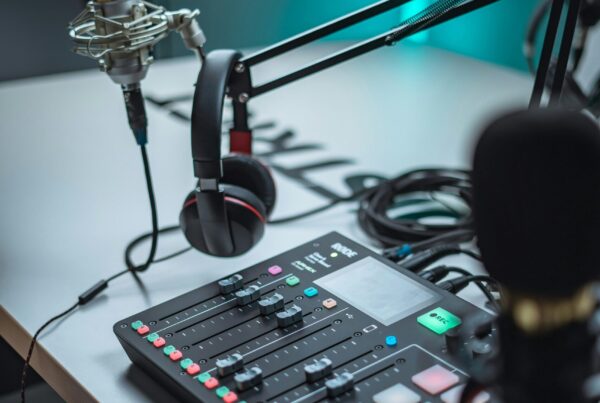Written by Pat Lilja, senior consultant
Podcasts are everywhere, and their popularity only continues to rise.
Many are attributing increased podcast interest to the phenomenon that is “Serial.” The podcast is the audio equivalent of a massive hit TV show — garnering approximately three times as many listeners per single episode as there were TV viewers the entire first season of “Game of Thrones.”
However, podcast listening truly took off in 2013 and has been accelerating since. The popularity and ubiquity of “Serial” has added fuel to the already burning podcast fire.
How popular are podcasts?
While topping five million listeners is impressive for “Serial,” the explosion of podcasts as an entertainment medium is far more evident in the broader industry’s numbers.
Apple reported that its iTunes service has charted seven billion total podcast listens (downloads and streams) and more than one billion podcast subscriptions in 2014. Notably, these numbers don’t include the people who stream podcasts via one of the many non-Apple podcast apps, meaning actual listener numbers are far higher.
In fact, Edison Research found that approximately 39 million Americans — nearly 15 percent of the population 13 years and older — listened to a podcast in March 2014, which was still well before “Serial.” This number is noteworthy because it’s higher than the number of people who tuned in to the highest-rated episode of “American Idol.”
As WNYC’s CEO and President Laura Walker put it, “People under the age of 30 don’t own radios.” With about half of podcast listeners between the ages of 13 and 34, the long-term growth of podcasting is essentially assured, especially since it’s a mobile, available-anywhere medium.
With nearly half of all mobile users already using their phones to listen to music, adding podcasts to the mix is easy once they are introduced to the idea. Coupled with the fact that car manufacturers have made Bluetooth standard and that Google and Apple are both looking to add streaming and podcast playback directly to cars, everyone with a mobile phone is now in charge.
It’s all about the (base) quality
There is no doubt that podcasts’ quality has dramatically improved over the past few years. This is due in large part to professional producers playing with the podcast medium.
In the early years of podcasting, there were professional entertainers, like on-air talent Adam Carolla, who starred in podcasts, but most podcasts lacked the necessary production talent on the back end … the writers, sound editors and producers that make something spectacular.
It’s no fluke that many of the top podcasts are offshoots of public radio production companies because the pool of talent behind the scenes is already there. The newest podcasts making big media splashes, like “Serial,” “Start Up” and “Reply All,” were created by former “This American Life” public radio producers. (“This American Life” itself is currently the number two podcast on U.S. iTunes.)
However, even podcasters with minimal budgets have access to inexpensive audio tools, great professionally produced examples of podcasts and a vastly larger audience.
Additionally, niche programs (many of which have loyal audiences that go back five to 10 years) are sounding better and better — and the folks who make them now profit a little off of advertising.
Quality production = quality “leads”
A major reason why podcast networks have started to form and become successful is that the ad revenue is finally available to support them. Podcast networks including “Earwolf,” “Maximum Fun” and “Slate” provide great production and marketing behind the scenes, which are essential to garner a large listener base and then attract advertisers.
One thing podcasts have over other audio mediums and that attracts adverting dollars is the lack of FCC limitations. Radio advertisers are limited by FCC rules as to what they can do for ads, but podcasters can get much more creative.
For example, brands like Durex can circumvent decency rules that apply to radio content to create more risqué, targeted advertising. As long as the content is not fraudulent, misleading or illegal, podcast producers do not need to concern themselves with many FCC rules.
Podcast advertising companies like Midroll are providing advertisers with access to podcast listeners who actually want to hear ads and who act on them. Podcast advertisers are willing to pay $20 to $40 per one thousand listeners, with some top podcasts receiving closer to $100 per thousand listeners (with some podcasts having 250,000 or more listeners per episode, and more than one advertiser, the ad revenue potential is huge).
You may wonder, why pay so much for listeners?
Midroll estimates that an amazing 63 percent of podcast listeners have purchased something they heard advertised on a podcast (I know I have). The best performing episodes have upwards of a million listeners. Plus podcast networks have seen great success in merchandising and even in crowdfunding. It’s clear that advertising on podcasts can pay off handsomely and better target their audience.
Podcasts: a triple threat worth your time
A young, engaged and mobile base of listeners. Increased production value. Growing advertising revenue.
The podcast medium has unlimited potential for growth as we get into 2015. As marketing communicators and content creators, we at Tunheim think this medium is ripe with potential for businesses of all stripes:
- Advertisers and businesses could reap a higher ROI, as evidenced by the estimate that 63 percent of listeners have purchased merchandise advertised during a podcast
- Advertisers can convey edgy, on-target brand messaging while reaching a specific (and likely young), engaged demographic that they couldn’t reach (or share) via traditional airwaves
- Podcasts offer organizations a new space to become thought leaders and offer authentic expertise to potential customers
- Podcasts allow brands to align themselves with high-quality, on-demand content and popular over-the-air personalities who reach their desired audience
It will be interesting to see if other podcast shows can build on the success of “Serial,” grab the public’s imagination and propel podcasting further into mainstream media. Likewise, the niche audiences of podcasts are not to be underestimated.
How do you envision podcasting could play a role in your marketing, advertising or business strategy in 2015? Read additional Perspectives content by Tunhiem staffer Natalie Wires, who shared her point-of-view in a “The Rising Popularity of Podcasts: Why Listeners Are Rediscovering Podcasts.”






